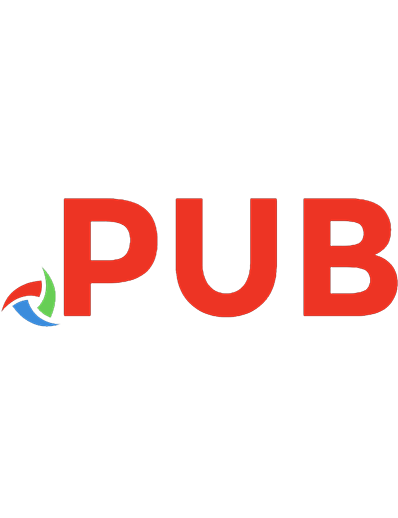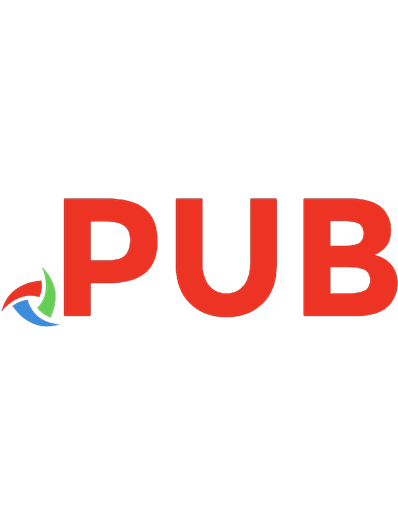Flying giants 9781597165419, 1597165417
Flying giants -- Pterosaurs -- Sordes -- Eudimorphodon -- Dimorphodon -- Pterodactylus -- Dsungaripterus -- Quetzalcoatl
460 137 3MB
English Pages 24 pages : color illustrations ; 19 cm [28] Year 2008
Polecaj historie
Table of contents :
Flying giants --
Pterosaurs --
Sordes --
Eudimorphodon --
Dimorphodon --
Pterodactylus --
Dsungaripterus --
Quetzalcoatlus --
Archaeopteryx.
Citation preview
by Monica Hughes
[Intentionally Left Blank]
Flying Giants by Monica Hughes
Consultant: Luis M . Chiappe, Ph .D . Director of the Dinosaur Institute Natural History Museum of Los Angeles County
Credits Cover, Title Page, 10–11, 14–15, 16–17, 18–19, 20, 21, 22, 23B, 24: Luis Rey; 4–5, 6: Natural History Museum; 7: Philip Hood; 8–9, 12: Lisa Alderson; 13: Simon Mendez; 23T: Shutterstock. Every effort has been made by ticktock Entertainment Ltd. to trace copyright holders. We apologize in advance for any omissions. We would be pleased to insert the appropriate acknowledgments in any subsequent edition of this publication. Library of Congress Cataloging-in-Publication Data Hughes, Monica. Flying giants / by Monica Hughes. p. cm. — (I love reading. Dino world!) Includes bibliographical references and index. ISBN-13: 978-1-59716-541-9 (library binding) ISBN-10: 1-59716-541-7 (library binding) 1. Pterosauria—Juvenile literature. 2. Pteranodon—Juvenile literature. 3. Birds, Fossil— Juvenile literature. I. Title. QE862.P7H84 2008 567.918—dc22 2007017665 Copyright © 2007 ticktock Entertainment Ltd. 2 Orchard Business Centre, North Farm Road, Tunbridge Wells, Kent, TN2 3XF, UK Published in the United States of America by Bearport Publishing Company, Inc. United States text copyright © 2008 Bearport Publishing Company, Inc. No part of this publication may be reproduced, in whole or in part, stored in a retrieval system, or transmitted in any form or by any means, electronic, mechanical, photocopying, recording, or otherwise without prior written permission from the publisher. For more information, write to Bearport Publishing Company, Inc., 101 Fifth Avenue, Suite 6R, New York, New York 10003. Printed in the United States of America. 10 9 8 7 6 5 4 3 2 1
Contents Flying giants . . . . . . . . . . . . . . . . . 4 The Pterosaurs . . . . . . . . . . . . . . . . 6
Sordes . . . . . . . . . . . . . . . . . . . . . . 8 Eudimorphodon . . . . . . . . . . . . . . . 10 Dimorphodon . . . . . . . . . . . . . . . . . 12 Pterodactylus . . . . . . . . . . . . . . . . . 14 Dsungaripterus . . . . . . . . . . . . . . . 16 Quetzalcoatlus . . . . . . . . . . . . . . . . 18 Archaeopteryx . . . . . . . . . . . . . . . 20 Glossary . . . . . . . . . . . . . . . . . . . . . . . . . . . . . . 22 Index . . . . . . . . . . . . . . . . . . . . . . . . . . . . . . . . 24 Read More . . . . . . . . . . . . . . . . . . . . . . . . . . . . 24 Learn More Online . . . . . . . . . . . . . . . . . . . . . . 24
Flying giants Pterosaurs were flying animals that lived at the time of the dinosaurs.
Pteranodon (terr-an -oh-DON)
4
Pterosaur means ”flying lizard.” Many of these animals looked like lizards with wings.
5
The Pterosaurs (TERR-uh-sorz)
Some pterosaurs were very small. Others had wingspans the size of a small plane—40 feet (12 m) long. They ate fish, bugs, and shellfish.
Sordes (SOR-dees)
6
Their light wings helped them make long flights.
Quetzalcoatlus ( kwet -zal-koh-AHT-lus)
7
Sordes (SOR-dees)
This pterosaur’s wingspan was about as wide as an open picture book.
Sordes had small, sharp teeth. It ate mainly insects. Its body had fur to keep it warm.
8
9
Eudimorphodon (yoo -dye-MOR-foh-don)
Eudimorphodon was also a pterosaur. It had about 114 teeth. Humans have 32 teeth.
Eudimorphodon’ s teeth helped it catch and eat fish.
10
11
Dimorphodon (dye-MOR-foh-don)
This pterosaur had a huge mouth and two kinds of teeth.
Dimorphodon had a 4-foot (1.2-m) wingspan. That span is about the length of a golf club.
12
Dimorphodon probably ate fish.
13
Pterodactylus (terr-oh-DAK-til-uhss)
This pterosaur lived near the ocean.
Pterodactylus had a long beak to help it catch fish.
14
It had three claws on each wing. Many other pterosaurs also had claws. beak
15
Dsungaripterus ( jung-gah-RIP-ter-uhss)
This pterosaur’s open wings were as wide as a sofa. It had a crest that ran down the middle of its face. It probably ate fish and shellfish.
16
crest
17
Quetzalcoatlus (kwet-zal-koh-AHT-lus)
This pterosaur is the largest flying animal ever found. Its wingspan was about 40 feet (12 m). Many buses are not that long! It lived near lakes.
18
It probably ate shellfish and other animals.
19
Archaeopteryx (ar-kee-OP-tur-iks)
Archaeopteryx was the first bird. It was not a pterosaur. It had feathers. Unlike today’s birds, it had teeth.
20
Archaeopteryx was not big. It was the size of a crow.
21
Glossary beak (BEEK) the hard, horn-shaped part of an animal’s mouth
crest (KREST) feathers or skin on top of an animal’s head 22
shellfish (SHEL-fish ) sea creatures with a shell, such as mussels or clams
wingspans (WING- spanz )
distances between the tips of wings 23
Index Archaeopteryx 20–21
Pterodactylus 14–15
Dimorphodon 12–13
Quetzalcoatlus 7, 18–19
Dsungaripterus 16–17 Eudimorphodon 10–11
Sordes 6, 8–9
Pteranodon 4
Read More Lessem, Don . Flying Giants of Dinosaur Time. Minneapolis, MN: Lerner Publications (2005).
Wynne, Patricia J . Feathered Dinosaurs: Flying Reptiles and Ancient Birds. Mineola, NY: Dover Publications (2005).
Learn More Online To learn more about the world of dinosaurs, visit www .bearportpublishing .com/ILoveReading
24
[Intentionally Left Blank]
Flying Giants
Amazing Dinosaur Facts Dinosaur Babies Dinosaur Fossils Dinosaur Hunting Fighting Dinosaurs Flying Giants Really Big Dinosaurs and Other Giants Swimming Giants
While dinosaurs roamed the land, many other animals flew. Some of them were small. Others were as large as an airplane. However, they all used their wings to help them get around, hunt, and survive.










